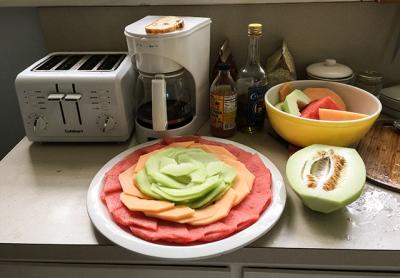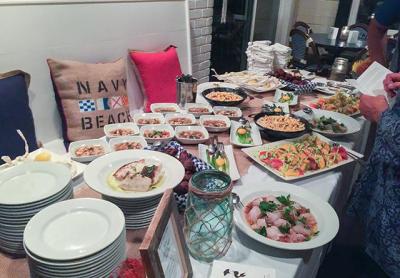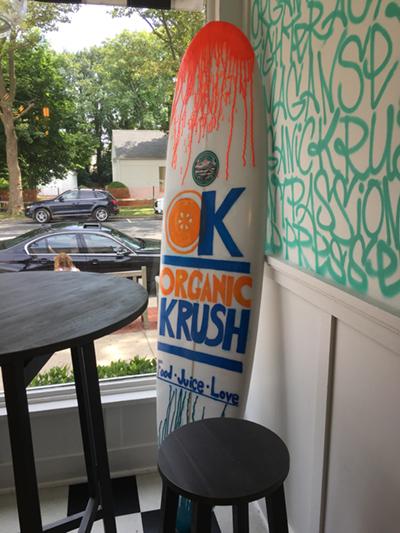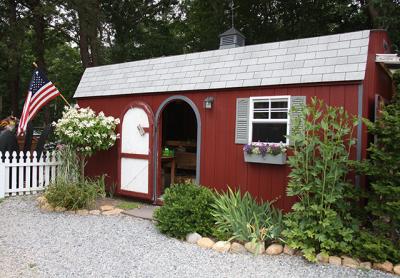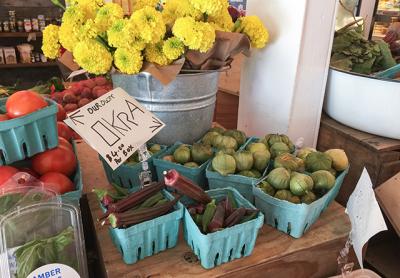A Perfect Combo at Wolffer Kitchen
A Perfect Combo at Wolffer Kitchen
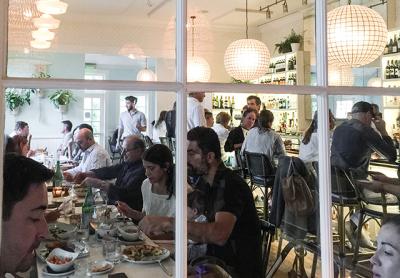
Wolffer Kitchen
4 Amagansett Square
Amagansett
631-267-2764
Summer hours: Dinner, seven days; brunch, Saturday and Sunday
As we near the end of the summer season (waaaaaah!), I have been reflecting on how many really very good restaurants opened this year. The new Wolffer Kitchen in Amagansett is most certainly one of them.
This sister restaurant to the one in Sag Harbor has moved into what was the Meeting House. The Meeting House was very good, but the expanse of white tile and hard surfaces made it a most noisy place to dine.
The changes are subtle but noticeable. Structurally, everything looks the same. You enter through an attractive covered patio by the front door and to the right are an open kitchen and high tables with stools. To the left are a long bar and flowery banquettes. Beyond that is a small dining alcove, perfect for romance or parents with screaming babies. Some of the walls are pale aqua and the light fixtures have huge rattan shades or abalone shell spheres. I wouldn’t call it “Bohemian,” as they do, but it’s certainly stylish.
We got lucky on the night of our visit: We were seated on the outdoor patio, which thankfully has overhead heaters. We began our meal with crispy shrimp, grilled calamari, zucchini noodles more zoodles!), and naan bread with hummus and olives.
The crispy shrimp were very good. The three huge, split, and flattened shrimp were in a sturdy, crisp batter, and sitting on a salsa of papaya, mango, cantaloupe, and diced red peppers. The shrimp was drizzled with gochujang, a sweet-spicy Korean condiment that pretty much makes everything taste better. The grilled calamari salad was warm and excellent. The rings and tentacles were tender and smoky, tossed with arugula, orange slices, chilies, and some tiny, red, pickled peppers that tasted like peppadews. We all loved this dish.
The zucchini noodles were a combination of zucchini and summer squash with diced tomatoes and plenty of garlic. This appetizer was okay. We thought a dash of salt might help it. The naan bread with hummus was excellent. The naan was nicely crisped and smoky from the wood-burning oven, and the hummus had a good balance of lemon and tahini with the puréed chickpeas.
For entrees we tried the scallops, cauliflower rice, black lentils with coconut red curry, and littleneck clams with more zoodles.
The five scallops were perfectly seared, caramelized on both sides but not overcooked, served on a bed of super fresh, sweet bicolor corn kernels mixed with shiitakes and other mushrooms, a bit of wilted kale, and drizzled with a buttery sauce. Most excellent. The cauliflower rice was rather bland with a few shreds of kale and some orange zest. The black lentils were more successful: rich and creamy with coconut milk, the red curry flavors not overpowering.
The littleneck clams were in a smoky red broth full of diced chorizo, chickpeas, and shredded zucchini. The clams were teeny and sweet and tender, and the broth was out of this world. A slice of toasted baguette was almost enough to sop up the broth.
The service that evening was excellent. Our waitress, Cornelia, knew her stuff and offered wise recommendations. The prices are moderate and the menu has many interesting options for vegetarians and vegans, which is not only necessary nowadays but quite admirable. There is something for everyone.
It is also worth mentioning the wine list, which is about 80 percent Wolffer wines with nary an Italian or French bottle on the list. There is a smattering of Spanish and Argentinian and a few from California and the Pacific Northwest. The markup of wines at most restaurants is two to three times the wholesale price. At Wolffer Kitchen you can get some of winemaker Roman Roth’s fine wines at very reasonable prices — many bottles are only $44.
Prices are $12 to $35 for raw items, salads, tapas, vegetables, and legumes. Wood oven items and main dishes are $24 to $45, and desserts are $12.
For dessert we sampled a banana s’mores sundae, flourless chocolate cake, and carrot cake, all are made in house. The banana s’mores sundae was very entertaining and very large. The banana slices were topped with ice cream, marshmallows, chocolate and caramel sauce. It was described as bananas foster sauce, but that would have been boozier. Maybe this was the PG version. The bowl was rimmed with graham crackers, and the marshmallows torched like the traditional campfire treat.
The flourless chocolate cake was a good rendition of what now seems to be a restaurant staple: gooey in the middle, made with a fine bittersweet chocolate, served with a scoop of vanilla ice cream, and artfully drizzled with chocolate and raspberry sauces. The carrot cake was two slices of roulade, thin cake rolled up jellyroll style with the filling inside. My guest who ordered it was not impressed, but I thought it was quite good. The cake was moist with carrots and shredded coconut, the filling lighter than the usually dense cream cheese frosting.
Midway through our meal, my friend Steven remarked, “This is the perfect marriage of environment, good food, nice weather, and dining outside.” Amen.

